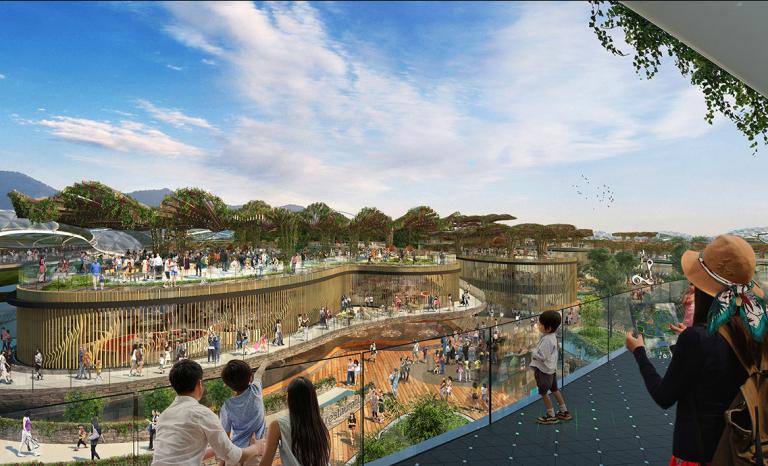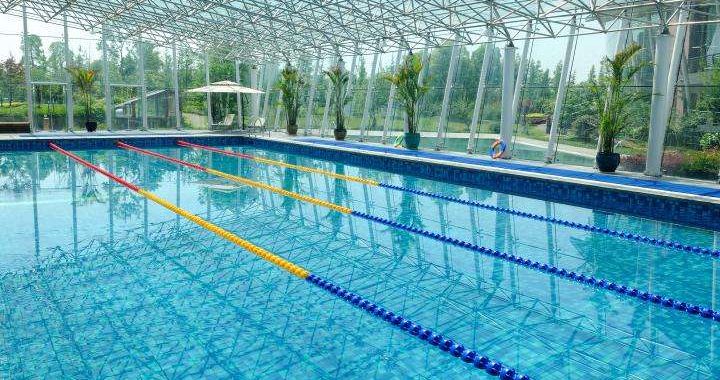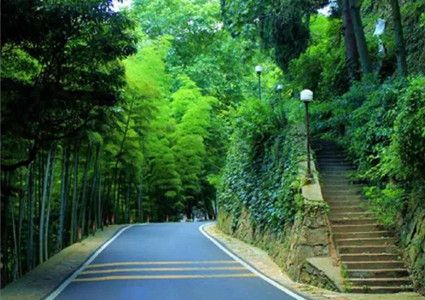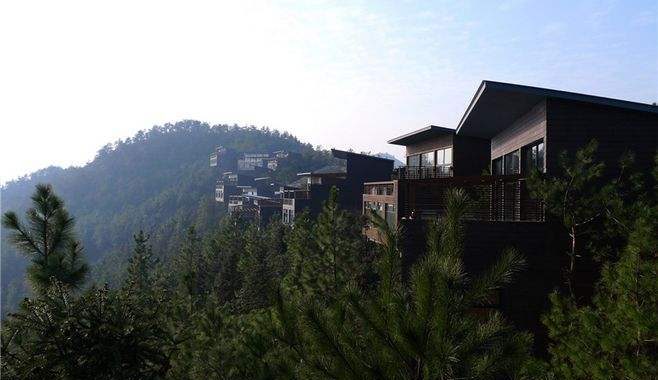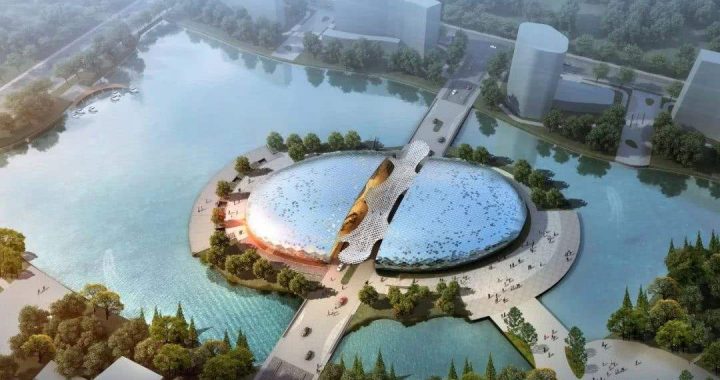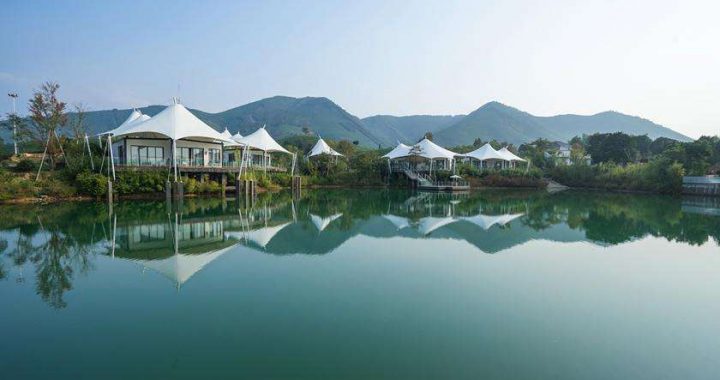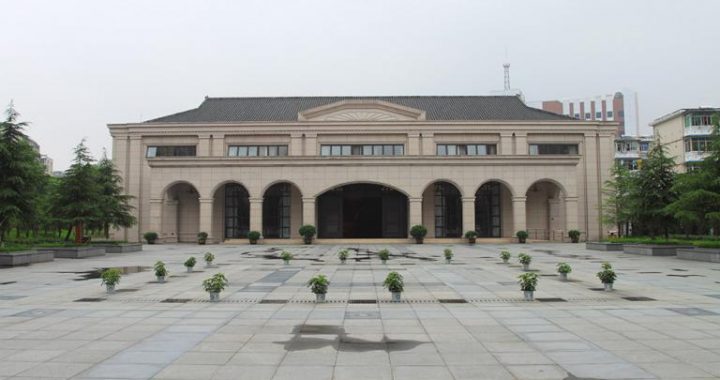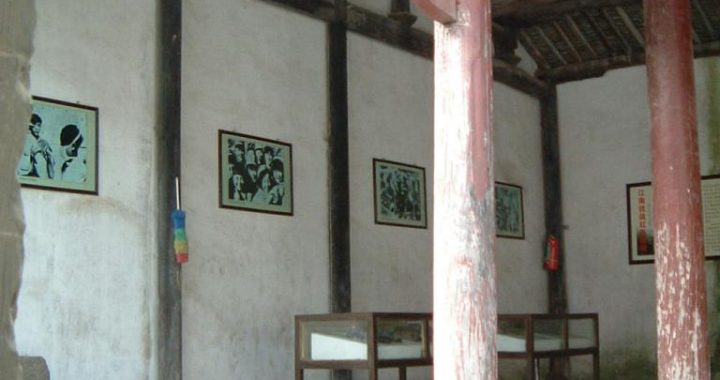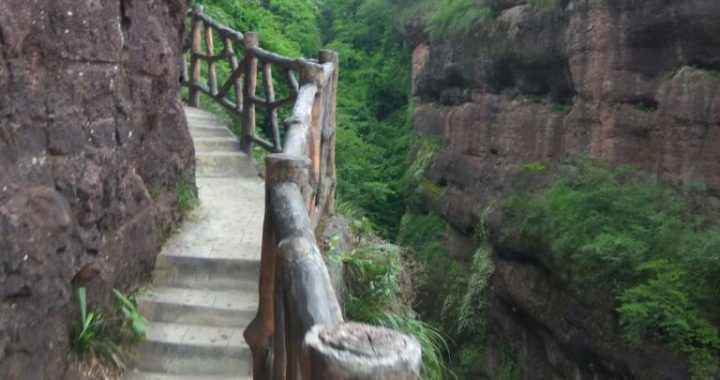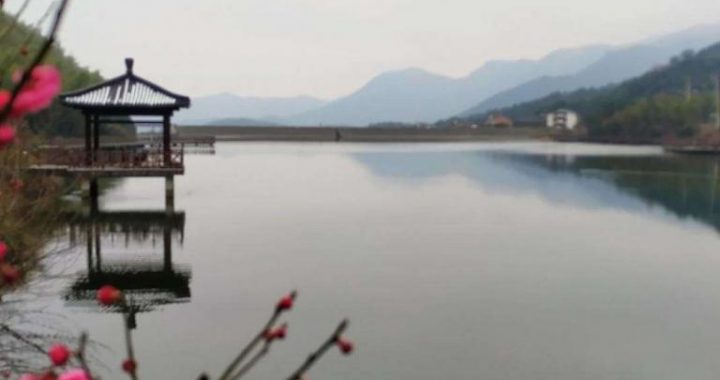The tourist attractions in Huzhou
21 min readBased on the development of Huzhou tourism,a general plan has been worked out by the municipal government. According to the distribution of Huzhou tourist resources and the overall design of construction, Huzhou tourism will develop into the layout of “Three Tourist Zones and Ten Major Tourist Sites”. This chapter gives readers a brief description of the characteristics about three tourist zones and ten major tourist sites.
Three Tourist Zones
Three tourist zones lie respectively by the southern Tai Lake in the north of Huzhou, in the mountain area in the West, and by the ancient canal in the Southeast. The three tourist zones reflect and embody the features of Huzhou tourism in “lake, mountain and river”. On the basis of the three tourist zones, ten major tourist sites are planned and constructed. They are conductive to the perfect itineraries of Huzhou. Tourists can fully appreciate the essential folk cultures, historical relics and natural sceneries in the area of South Tai Lake, in ecological area of mountains, and ancient sites by the ancient canal.
Ten Major Tourist Sites
The Ten Major Tourist Sites are as follows: the famous Historical and Cultural Tourist Site in the City Center, the Scenic Site of the Southern Suburb, the Scenic Site of Southern Tai Lake Resorts, Historical and Cultural Tourist Site in Nanxun Town, the Scenic and Historical Site of Mogan Mountain in Deqing County, the Wetland Secnic Site of Xiazhu Lake in Deqing County, the Natural Reserve Site of Dragon King Mountain in Anji County, the Tianhuangping Scenic Site in Anji County, the Ancient Eco-tourist Site, and Tea-culture Site of Guzhu Mountain in Changxing County. They will be sketched respectively in the following.
Historical and Cultural Tourist Site in the City Center
In January 2003, Wuxing, an official administrational district was approved by the State Council. Wuxing district covers the city proper and its suburbs including six residential districts in downtown, and nine suburban villages and small towns under its jurisdiction. As a famous historical and cultural city, it is privileged with a number of historical interests, cultural relics, garden architectures, and scenic beauties. Many of them are concentrated in downtown. Strolling along the streets one can feel the atmosphere of the modern city, as well as find the ancient shops with time-honoured names that are still in business.
Wuxing district enjoys excellent natural surroundings with green mountains and clear water. It is a quiet and beautiful place nicknamed”Paradise on the Earth”. Since ancient times, Wuxing has been a famed prefecture in southeastern China. The ideal living environment cultivated a galaxy of talents from generation to generation. Many elites were also attracted to this district. They made remarkable contributions in various domains. Wang Xizhi, Xie An, Yan Zhenqing, Du Mu and Su Shi all spent their whole lives or once worked here for a long period. Hu Yuan, the great educator and philosopher of the North Song Dynasty, founded the Anding Institute where he gave lectures for thirteen years. Now visitors can pay their respects to him at Hu Yuan Tomb located in Daochang village with green hills surrounding it.
In downtown, there are so many historic sites, cultural relics and scenic spots that tell visitors of wonderful legends and anecdotes.”Bridge over Bridge””,”Temple in Temple””, and “Pagoda within Pagoda”are praised as “Three Wonders in Wuxing”. Lotus Villa Garden, the former private garden of Zhao Mengfu during the Yuan Dynasty, presents the beauty of nature combined with garden arts. Zhou Mi,a scholar lived during the Southern Song Dynasty, once described the Lotus Villa Garden as the best garden in the south of the Yangtze River. In addition, the ancient Tiefo Temple with a Goddess statue from the Song Dynasty has a history of more than one thousand years. Sleeping Buddha Temple, Benevolent Temple and other temples represent religions in this district and have their own striking local characteristics.
The rich historical cultures and relics attract a large number of civil and foreign tourists to visit Huzhou each year, and the downtown has also become the center of coming and going for Huzhou tourism.
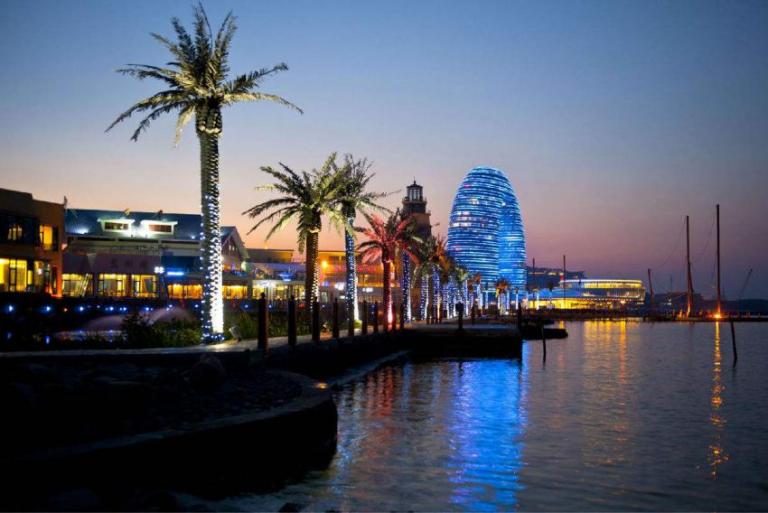
Scenic Site in the Southern Suburb
Since ancient times, the southern suburb has been a popular place for men of letters and refined scholars to meet out. Because of the the scenic site with green hills, clear water, fresh air and pleasant surroundings, many citizens often go there to spend their free time during holidays, and get away from the bustle of city. It is a good destination for an outing amongurban residents in early spring, especially on April 4th,5th, or 6th, one of the three days is the Pure Brightness Day, which marks the beginning of the 5th of the 24 solar terms in China. These three days are traditionally observed as a festival for commemorating the dead. People cherish the memory of them and often go there sweeping graves of ancestors and martyrs.
This scenic site was formally approved by the local government as a promising tourist scenic site in 1995. It would cover about 46 square kilometers according to the long-term city planning. An overall design for its renovation has been made, and the whole construction is being implemented. Within the core area of 20 square kilometers, there are more than 30 natural scenic spots and historical relics in existence. DuobaoBuddha Pagoda stands on the top of the Daochang Mountain which pierces directly into the sky. Daochang Mountain belongs to the Tianmu Mountain ranges at a height of 210 meters above sea-level. Su Dongpo,a great writer and poet of the Northern Song Dynasty, climbed up this famed mountain more than once during the time when he was appointed as the prefect of Huzhou. He gasped with admiration at the beautiful scenery of the mountain.
Just as many other famous poets had done, he also praised its splendor and left behind immortal poems. Seeing from the top of the Daochang Mountain, tourists can get a panoramic view of the urban district in the distance.
Wanshou Temple,a well-known monastery in southeastern China, is listed as one of the ten most famous temples in China. Visitors often prostrate themselves before the image of Buddha in Wanshou Temple with burningjoss sticks in hands while making a vow or murmuring what they want.
In the north of this scenic site, tourists can climb up another mountaincalled Xian Mountain. The martyrs’ cemetery is located there, and tourists can pay homage at the Chen Yingshi Tomb. In Bilang Garden nearby, tourists can appreciate many stone tablets engraved with the inscriptions of the handwritings from great masters. These engraved stone-tablets are set onto the wall of a public corridor to display. Jingai Mountain is situated at the south of the site. At the foot of the mountain, the Taoist temple called “Ancient Plum Blossom Taoist Temple”still attracts an endless stream of pilgrims. In this scenic site tourists can get to the ancient Ruins of Xiagu City to trace back its history and know something about the ancient city.
According to the overall plan of the construction, when the sightseeing avenue is completed on the west bank of the Eastern Tiaoxi River, it will join the northern part and the southern part of the scenic site. Then, tourists will be able to catch a glimpse of new charming waterscape in the southern suburb of the city proper.
Scenic Site of Southern Tai Lake Resorts
The Scenic Site of Southern Tai Lake Resorts is situated in the north of Huzhou on the southern shore of Tai Lake, covering the land area of 220 square kilometers, and the water area of 300 square kilometers with the lake shoreline about 60 kilometers long. It is only 8 kilometers away from the downtown, about 140 kilometers from Shanghai to the east,70 kilometers from Hangzhou to the south,110 kilometers from Wuxi to the north,90 kilometers from Suzhou, and 220 kilometers from Nanjing to the northwest.
It takes only about 2 to 3 hours by bus from the site to forementioned cities respectively. Southern Tai Lake Resorts has very convenient transport facilities. Shen-Su-Zhe-Wan Express Highway(Shanghai, Jiangsu, Zhejiang, Anhui), Hangzhou-Ningbo Express Highway, No.318 and No.104 National Highways all pass through its eastern and southern regions.A new inter-city high speed rail of Ning-Hu-Hang is under construction and will operate soon. Additionally, tourists can go directly to Wuxi on the opposite by boat acrossing the Tai Lake.
The site is valued for its natural landscape combined with the long history of folk custom and water culture of Tai Lake. In recent years, the local government has invested heavily in the site to raise the capital construction of tourism. Proceeded by both land and water, the communication lines have been completed. The facilities for water sports and a super five-star hotel have been set up, too. Taking the advantage of Tai Lake as fully as possible, the tourist site shows the affinity with water everywhere. The site mainly consists of South Tai Lake Central Park and Holiday Center, Qucheng Relics, Taihu Sights, Huanglong Cave, Fahu Temple, Bianshan Hill, Wetlands, Taihu Grand Embankment and so on.
South Tai Lake Central Park and the Holiday Center are constructed at the core of the site with the European flavours, and skillfully integrated with the characteristics of natural surroundings. The unity of nature and human beings gives tourists a feeling of natural return. Now this tourist site has been crownded with the title of State Tourist Resort with AAAA-grade, and become one of the top ecological resorts in China. The newly built Sheraton Hotel is an architectural spectacle on water, which is in the shape of a magnificent silver ring rising from the lake. It is really pleasant to face the vast Tai Lake and look into the fishing boats in the distance while having a meal in the dining hall of the hotel.
The scenery of Tai Lake attracts countless visitors, yet, tasting the local special aquatic products from Tai Lake can not be left out in one’s tour. Tai Lake has an abundance of good things, and the silver fish, white-shell shrimp and long-tailed anchovy are best. They are generally called”Three Kinds of White Treasure in Tai Lake”. Both hotels and fishman booths serve the three readily.
Historical and Cultural Tourist Site in Nanxun
Nanxun is a typical ancient town of rivers and lakes in the south of the Yangtze River. It has a history of more than 750 years and ranks among the top six famous ancient towns in southern China. The clean and exquisite small town is characterized by rivers and bridges. Nanxun is called a town of rivers and lakes for”one archway every step and one bridge every five steps”. Small stone bridges over the leisurely flowing river and attached row houses along the riversides highlight the civilization of long standing.A river bordered by two streets with slabstones, the riverside streets punctuated with arch gates, fire proof walls and suspended buildings leave a deep visual impression on visitors. As the saying goes,”It would be better to take a tour in Nanxun than to make 99 trips over other places in the south of Yangtze River.”
Within this two-square-kilometer area there are decades of historical and cultural heritages. Many of them belong to the national, provincial, orlocal key protections. Baijian Lou, one hundred attached row houses, is the most perfectly preserved ancient building complex in Nanxun. It represents the gentle and simple life of the inhabitants near the river from generation to generation. Little Lotus Manor, which was constructed on literary mood of the poem”Walking in Mountain”composed by Du Mu in the Tang Dynasty,consists of a family temple,a charity chamber, and gardens. The distinguished plants, zigzagging galleries, fine pavilions, and the mix of French and European architecture create an intoxicating atmosphere. Thegardens in Little Lotus Manor even rival those gardens in Suzhou. Jiaye Tang, the Book Collection Library, used to be a private book house and now it has become a national key protected cultural unit. The design of the building is the traditional Chinese style blended with a distinct western flavor. Many of the book collections within its walls are historic, valuable and rare. The Former Residence of Zhang Jinjiang, Yide Hall, the Red House, the Temple of Guanghui, and the Hall of the Silk Guild all pass on their owners’ legendary stories.
Nanxun is an excellent tourist site with impressive ancient architecture, profound Chinese culture mixed with Westen culture. More cultural relics and historical interests are currently being protected. When you walk along the paths paved with slabstones and step on the age-old bridges, you seem to be truly transported back in time and a feeling of returning to the past rises spontaneously.
Mogan Mountain Scenic and Historic Site in Deging
Mogan Mountain Scenic and Historic Site is a famous summer resort.It has been enjoying the titles”Top Mountain in Southern China”,”Cool and Placid World”and the “Architecture Museum of Chinese and Western Styles”. The whole site covers an area of about 100 square kilometers, including 43 square kilometers of scenic area. Rolling mountain peaks, floating clouds, gurgling spring streams and green bamboo groves constitute a graceful scene that is characterized by “cool, clear, green and placid”.
Many noted public figures and political leaders have been there to rest and recuperate. With the development of tourism, Mogan Mountain Scenic Site is becoming a more and more popular place for tourists from home and abroad.
Mogan Mountain, located in Deqing County, belongs to the Tianmu Mountain ranges. The main scenic spots on the mountain are Jianchi, Luhuadang, Wuling, Guaishijiao, Ancient Tianchi and others.
The mountain often has unpredictable cloud and wet weather. However, the alternation of the seasons is distinct. Tourists will enjoy the different sceneries at different times. In spring, bamboo shoots break out the ground all over the mountain after a heavy rain. In summer, dense forests of tall bamboo and towering old trees keep out the scorching sunlight. Even midday, the mountain paths are well sheltered from the hot sun. Gurgling streams send out peaceful noises, and roaring waterfalls can be heard at a long distance, which creates the background music. In the afternoon of summer, it often brings a gentle dizzling rain which makes the surroundings more comfortable and visitors can go out for some fresh air. In autumn, red maple leaves stand out against the clear blue sky, and orange osmanthus flowers are in blossom over the mountain with the air full of the delicate fragrance. It is also the best season in a year for local residents to climb up the mountain in their spare time. In winter, tourists would experience another pleasant feeling on Mogan Mountain. They may run to a heavy snowfall during their stay on the mountain. It is rather romantic for tourists to take a stroll in dancing snowflakes, and try to catch the snowflakes with the tip of the tongue. They might be shocked by the lofty rolling mountains near and far that have been blanketed by thick snow overnight. The poetic charm adds some unfathomable beauty to the mountain in the bright morning sunshine.
Mogan Moutain is not only characterized by its wonderful scenery, but also noted for its historical culture. In the past, many a literary man had an indissoluble bond with it and left a lot of treasured inscriptions on the site.
According to the incomplete statistics, there are presently thirty-four rock carvings on the whole mountain. Most of them can be viewed near Jianchi Pond and Lingque Bridge.
Mogan Mountain Scenic and Historic Site has another must-see for tourists. There are more than two hundred historical constructions scattered over the mountain. They were built by missionaries from the United States, United Kingdom, France and Germany during the late 19th century and theearly 20th century. These beautiful buildings and villas were skilfully designed in different and attractive appearances. Some were built in Chinese classic, some in modern-style architecture, while others were modelled after West European farmhouses and castles in the Middle-Ages. These villas are the most telling witness to the historical stories.
Mogan Mountain, as a national scenic site with AAAA-grade, provides so many picturesque sceneries for tourists to appreciate. It is undoubted that anyone who makes the trip to Mogan Mountain will leave with satisfaction.
Wetland Scenic Site of Xiazhu Lake in Deqing
The Wetland Scenic Site of Xiazhuhu is a newly developing tourist site located in the suburbs of Wukang town in Deqing, which is about 200 kilometers away from Shanghai, and 270 kilometers from Nanjing. The cross-border Hang-Ning (Hangzhou-Nanjing) Expressway, Hu-Ning(Huzhou-Nanjing) Expressway and Hu-Hang (Huzhou-Hangzhou)Expressway form a traffic network extending in all directions that makes tourists very convenient to get there. The whole site now occupies an area of 36 square kilometers including about 10 square kilometers of wetland.
The main water body takes up about 3.5 square kilometers. The wetland of Xiazhu Lake takes an important geographical position. It is a transitional wetland stretching from the western mountain area to the eastern region crisscrossed with rivers and lakes. The combination of water and mountain creates an ideal natural setting.It is often said that Fangfeng State in the site was established on the earth,but Xiazhu Lake was bred in Heaven.
The Wetland Scenic Site of Xiazhu Lake is divided into the upper area and the lower area.Xiazhu Lake is the bright pearl in this tourist site.The central water area of the lake covers about 1.26 square kilometers.It is the third largest lake in Deqing County and the fifth largest inland lake in Zhejiang province.As the largest wetland in Southern China,Xiazhu Lake is also the birthplace of Liangzhu Culture and Fangfeng Culture,which has a long history of 5,000 years.Except for rich cultural heritages,the natural resources abound in the wetland as well.Hushang Mountain and Daoguan Mountain connected by Biandan Mountain stand upright to the north of the lake.The reverted reflection of the mountains in peaceful lake adds a uniquesight to the site.The Lake has about 6,000 islets and thick reeds in shallow water.Flocks of wild birds,aquatic creatures and plants can be foundeverywhere.Surprisingly,the wetland lake has a so wide view of water surface that the water and the sky join together in one colour at the far distance,but the lake has so shallow sections and narrow branches of water that the waterways zigzag in the overgrown reeds like winding alleys.
Taking a boat through the long stretch of wild reeds,as if one entered a dizzying maze.Tourists can fully enjoy the lush wilderness here.That is where the mystery of the wetland lake lies.
Additionally,there are ancient temples,pavilions,gardens and Fangfeng tribe in this site. The wetland scenic site changes with the alternation of seasons. It is appropriate to compare its colours and appearances to different picturesqueviews. In spring, it has got a spring scene that pleasant breezes stroke your face gently, peach blossoms and willow twigs present a striking contrast of colour. In summer, green lotus and light yellow reeds wave in the wind, and seem to give a warmly welcome to visitors. In autumn, orange osmanthus give out a smell of fragrance, blazing-red maple leaves see off the wild geese passing by, and winter turns it into a world of white when it has an auspicious snowfall which promises a good harvest next year.
Natural Reserve Site of Dragon King (Longwang) Mountain in Anji
Longwang Mountain in Chinese means the mountain in which King Dragon(the God of Rain) lives. Just as the name implies, the site includes multi-peaked mountains, rolling hills, deep pools, and roaring waterfalls. It is situated at the south of Anji County on the north side of West Tianmu Mountain.
In this area there are 18 peaks that are taller than 1,000 meters above sea level, including 5 peaks over 1,500 meters. The main peak ranks as the highest in the north of Zhejiang province with an elevation of 1,587.4 meters.
Because of rich resources in wild plants and animals, Longwang Mountain enjoys the reputations of a natural species garden and a gene pool of wild plants. About 1,300 kinds of plants there are divided into 155families and 666 categories. Many of the plants are under the national protection. Considering the great scientific value, it was approved by the Zhejiang government as a provincial nature reserve in 1985. Now it has been reported to the state council as a national eco-reserve site.
The Natural Reserve Site of Longwang Mountain amazes the tourists with the ever-changing aspects of its beauty. Climbing up to the top of the mountain, tourists will have a panoramic view of peaks near and far at a glance. The clear sky and fresh air make visitors feel relaxed and carefree.
Yet, the weather there is changeable. It often shines one moment and rains the next. The fleecy clouds float across the sky one minute ago, and the dark clouds blot out the sky the next.
When tourists walk along the rugged mountain paths, they will find the age-old pine trees that have survived natural calamities for years. The stone pillars beaten by wind and storm on the mountain give full play to one’s imagination. Few of tourists are so lucky to enjoy the vast stretch of unadulterated azalea in blossom at such a high sea level. It is a rare sight of azalea in the world in terms of its elevation. It is worthy to be mentioned that Longwang Mountain is the source of Huangpu River in Shanghai, which was proved by the scientific investigation in 1999.As a result, the place where the Mother River originates from has become another hot tourist spot for the people from Shanghai. The Natural Reserve Site of Longwang Mountain with its mystique and rustic charm tempts more and more visitors to go for exploring and touring.
Tianhuangping Scenic Site in Anji
As the most important regional tourist center of Huzhou city, Anji County has been enjoying the title of “Home of Bamboo”. Tianhuangping scenic site is the key tourist site within its boundaries. There are so many bamboo scenery and spots in the site. Some of them have become hot tourist spots and places for shooting films as well. The main tourist spots in this site are Tianhuangping Power Station, the Bamboo Museum, the Bamboo Seed-breeding Garden, the Great Sea of Bamboo, Canglong Baipu (Hidden Dragon and Hundred Waterfalls), and Jiulong Xia(Nine Dragons Valley).
Tianhuangping Power Station is the largest water pumping and energy storage power station in Asia. It is a famous landmark of industrial tourism in this country. The Bamboo Museum and the Bamboo Seed-breeding Garden closely combine the study of bamboo together with its production, ecological environment, and eco-tourism. Both of them are renowned in the Yangtze River Delta and titled respectively with the national AAAA-grade tourist spot.Canglong Baipu and Jiulong Xia are wonderful sights in theregion of Yangtze River.Canglong Baipu is situated only 100 meters away from Tianhuangping Power Station.In Chinese,the character of“bai”is for “hundred”,which has a figurative sense of“many”,and“pu”means “waterfall”.The piled waterfalls that come down the rocks form a grand view of multiwaterfall.That is why the picturesque sight is named”baipu”.
It is the greatest group of waterfalls in Zhejiang province.Jiulong Xia,which means Nine Dragons Valley,is also called“White Tea Valley” because of the white tea that grows there.White tea is one of four local specialities produced in Anji County.When tourists visit Jiulong Xia,they may be told some fairy tales and popular legends related to the valley.The Great Sea of Bamboo covers an area of 10,000 mu(a Chinese unit of area,1mu=0.0667 hectares).It is the largest base for bamboo production.
Visitors can enjoy the unique bamboo sceneries and find various precious bamboos there.At the same time,they can learn bamboo culture and personally take part in those entertaining activities related to bamboo.
Tianhuangping Scenic Site,undoubtedly,will integrate industrial tourism with vacationing,sightseeing,sporting and cultural exchanging.An international tourist site is taking shape.
Ancient Eco-tourist Site in Changxing
This tourist site is characterized by the “Three Ancients”, namely ancient geology, ancient flora, and ancient fauna.
Changxing is a world-famous place for fossils. Changxing Limestone referred to as the “Golden Nail”, is the geologic bedding section of dividing line from the Permian system to the Triassic system which tells what happened on our earth before 250 million years. It is a permanent index with a universal standard of measurement approved by UNESCO. More than 400 species of ichthyolite, nerita, and tadpole have been discovered there, including over 50 kinds of fossils that belong to the first discoveries in the world. Many experts from different countries have been there to make scientific investigations. They picked and collected specimens in happy astonishment.
It is said that 6 great extinctions of species took place on the earth,especially in the time of 250 million years ago, about half of the neritic living beings were destroyed, two thirds of the amphibious animal and thereptile were extinct, and insects experienced the first great disaster in evolution. However, both the gingko and the Chinese alligator survived in Changxing are the representatives of ancient plants and animals that had lived on the earth for more than 200 million years. Therefore, they are called “living fossils”.
The gingko tree, which is considered as the oldest plant in existence, can be traced back to 270 million years ago. Scientific data indicates that gingko trees were on the brink of extinction during the glacial epoch in the Cenozoic Era, but they managed to survive in certain ranges of Tianmu Mountain, such as the area like Changxing. The gingko was introduced to Japan during the Song Dynasty, then to Europe via Japan, and once again to America. It is rare to see the gingko trees that grow so luxuriant and dense in one place throughout the world, but visitors can enjoy the wonderful scenery of gingko forest in Changxing. The great gingko forest extends to 12.5kilometers. It is really a wonderful sight.
As for the ancient animal, the Chinese alligator has been in existence for generations from the Mesozoic and Triassic Period. The Mesozoic Erawas the prime time for the reptiles. Just like the dinosaur, the Chinese alligator as one kind of reptiles became one of the “dominators”on the earthat that time. When the dinosaurs and most of the reptiles died out during the Cenozoic Era about 70 million years ago, the Chinese alligator and someother similar species fortunately escaped from the great disasters. The Chinese alligator has a longer history than that of human being. Its survival is a miracle, and it deserves to be called “living fossil”.
With the development of society and the activities of human being, the dwelling conditions for the Chinese alligator are worse and worse. The total number of the wild Chinese alligators now is no more than one hundred. It is on the verge of extinction. Since 1979, two nature preservation districts have been separately set up in Xuanzhou of Anhui province and Changxing of Zhejiang province. Chinese Alligator Village in Changxing Countyoccupies an area of 10 hectares including a museum, in which livingalligators, specimens, samples and pictures are displayed. To develop tourism, the local government is making efforts to improve the facilities and conditions in the nature preservation district. An excellent eco-protection sitethat combines scientific research with tourist sightseeing has come into being.
Tea-cultural Site of Guzhu Mountain in Changxing
Situated at the foot of Guzhu Mountain in the north of Changxing county, the site is 17 kilometers away from Zhicheng town (the seat of the county government). This place has been famous for tea culture since the Tang Dynasty. Its tea culture enjoys great fame throughout the southeastern
Asia. As the original land of tea culture, the first imperial house for manufacturing tea was set up in the year of 770. The tea that produced here was listed as a tribute to the court in the Tang Dynasty. At the beginning of spring season every year, the governors of Huzhou, Changzhou, and other places nearby received the imperial assignment of going there to inspect and supervise the manufacturing of tributary tea. In those days, many elites and poets like Yan Zhenqin, Du Mu, Yuan Gao, Yu Jie, Zhang Wengui, and LiCi made their trips there and left many poetic verses and rock carvings on the hillsides. These remains add the Guzhu Mountain much culture beyond that of tea alone.
Facing towards the Tai Lake to the east, and the Tianmu Mountain to the west, Guzhu Mountain has the temperate climate. The fertility of the soil is very favorable for planting tea. To one’s surprise, some tea called Zisun is made with Jinsha spring water in a container or just poured the boiling water into a cup, the ready leaves of dry tea stretch out as the tender tips of bamboo leaves. For a while, the tea water mixed with Zisun Cha turns purple slowly. That is why this kind of tea is called “Zi Sun Tea”(purple bamboo-tip tea) in Chinese. It is worthy mentioned that Lu Yu, who completed the first work on tea in the world, chose this place for his permanent residence. He cultivated tea himself in the tea plantation and carried out his researches into tea at the same time. For these reasons, the place now is considered the birthplace of tea culture in the world. It is the qualified place to study the formation of tea culture. Fresh air, greenmountains, delicate brooks, and those activities about tea culture have constantly held visitors and audiences spellbound for ages. Gradually, this place becomes a hot tourist site characterized by tea culture.
There are many scenic and historical spots in this tea cultural tourist site with their own stories. Tourists can pay a visit to the ancient site of tea house for manufacturing tributary tea, to Shousheng Si(Longevity SaintTemple), to Bawang Tan (Pond of Xiang Yu), to Wanggui Ting(the Pavilion of Forgetting Return), to Jinsha Quan(Golden Sand Spring), to Qingfeng Lou(Refreshing Breeze Tower), to Hutou Yan (Tiger Head Rock), and so In recent years, the local farmers take the advantages of rich eco-tourist resources and provide tourists some farm work for pleasure, such as fruit picking and tea picking. The rustic tour with farm activities has a strong local flavor, espscially attracts those who like spending their weekends in the countryside. Practicing farm work with their own hands gives tourists another kind of pleasant experience in the site.
